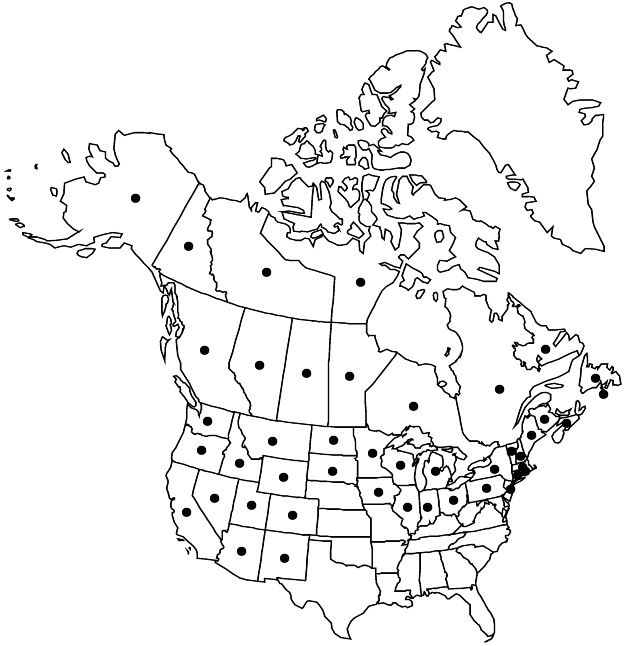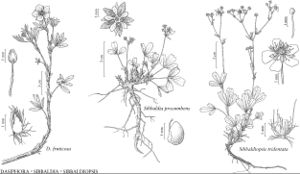Difference between revisions of "Dasiphora fruticosa"
Monogr. N. Amer. Potentilleae, 188. 1898.
FNA>Volume Importer |
imported>Volume Importer |
||
| (One intermediate revision by the same user not shown) | |||
| Line 84: | Line 84: | ||
|publication year=1898 | |publication year=1898 | ||
|special status=Illustrated | |special status=Illustrated | ||
| − | |source xml=https:// | + | |source xml=https://bitbucket.org/aafc-mbb/fna-data-curation/src/2e0870ddd59836b60bcf96646a41e87ea5a5943a/coarse_grained_fna_xml/V9/V9_482.xml |
|subfamily=Rosaceae subfam. Rosoideae | |subfamily=Rosaceae subfam. Rosoideae | ||
|tribe=Rosaceae tribe Potentilleae | |tribe=Rosaceae tribe Potentilleae | ||
Latest revision as of 22:57, 5 November 2020
Plants prostrate or spreading to weakly erect. Leaves: stipules often sheathing, 6–12 mm, scarious, glabrous; petiole 0.5–1(–1.5) cm; leaflets 0.5–2.5 × 0.2–1 cm, subglabrous to appressed silky-villous especially abaxially, sometimes merely villous on veins. Pedicels 5–15(–30) mm, elongating in fruit, thinly villous. Flowers: epicalyx bractlets narrowly lanceolate, 4–13 mm, usually equal to or shorter than sepals, sometimes revolute, villous; sepals 4–6(–9) mm, apex acuminate, villous; petals 5–15 mm; anthers 0.9–1.2 mm, connective reddish brown to blackish, theca yellowish; styles 0.8–1.5 mm. Achenes light brown. 2n = 14, 28 (Europe).
Phenology: Flowering summer.
Habitat: Sandy to gravelly shores, flats and rocky slopes, on ledges and bluffs in conifer and deciduous woodlands, meadows, or fens, alpine woodlands and meadows
Elevation: 0–3600 m
Distribution

St. Pierre and Miquelon, Alta., B.C., Man., N.B., Nfld. and Labr., N.W.T., N.S., Nunavut, Ont., Que., Sask., Yukon, Alaska, Ariz., Calif., Colo., Conn., Idaho, Ill., Ind., Iowa, Maine, Mass., Mich., Minn., Mont., Nev., N.H., N.J., N.Mex., N.Y., N.Dak., Ohio, Oreg., Pa., R.I., S.Dak., Utah, Vt., Wash., Wis., Wyo., Eurasia.
Discussion
Dasiphora fruticosa is circumboreal, encompassing significant variation, some of which has often been given taxonomic recognition on the basis of ploidy level, sexuality, vestiture, leaflet shape, and flower size. The phase that occurs in North America is monoecious; it is also found throughout much of Asia and portions of Europe. Although sometimes distinguished as D. floribunda, this phase is only weakly differentiated morphologically from the tetraploid, usually dioecious, phase (typical D. fruticosa) that occurs in the Old World, where the two phases often occur in mixed populations (J. Klackenberg 1983). Given this complexity, this taxon is conservatively treated here as a single species, as has been done in Europe by A. Kurtto and colleagues (in J. Jalas et al. 1972+, vol. 13).
Both the American and European expressions are widely cultivated, with more than 150 cultivars, some of which differ greatly in petal color (for example, white, reddish orange).
Native Americans, mainly in Canada, occasionally brewed a tea from the leaves. Fruits are eaten occasionally by rodents and birds.
The names Pentaphylloides floribunda (Pursh) A. Löve and P. fruticosa (Linnaeus) O. Schwarz are not legitimate, the latter being widely used prior to 1998 (J. L. Reveal et al. 1999). The combination P. fruticosa var. tenuifolia (D. F. K. Schelchtendal) Lehmann is superfluous; its counterpart in Dasiphora (cited in synonymy) is valid and legitimate.
Selected References
None.
